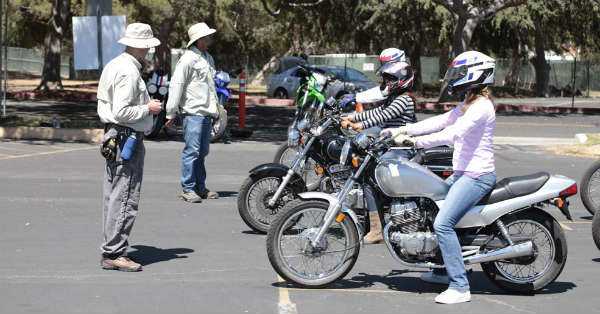You have researched for years, and finally, you’ve bought your first motorcycle. You can spew facts about your bike to anyone who asks. You know everything about it from its weight to its torque specs to the architectural elements of its engine. But before you even consider hitting the open road, you need to familiarize yourself with motorcycle safety. 90% of motorcyclists involved in crashes have taken no safety training at all. To avoid becoming a part of this statistic, you need training from a qualified instructor. A motorcycle course is necessary to protect yourself and those you share the road with. Both in-class and on-the-road training will provide you with the knowledge you need to be a responsible rider.

Have we piqued your interest? Keep reading to learn everything you need to know about motorcycle training courses.
Who Needs a Motorcycle Safety Course?
In an ideal world, any beginner motorcyclist would take a safety course beforehand. In real life, it doesn’t work like this.
Some states require specific age groups to take training courses beforehand. In California, for example, any rider under 21 must pass a safety course before getting their license.
What You Can Expect to Learn in a Motorcycle Training Course
A motorcycle course will introduce you to the vast world of motorcycling. You’ll learn all you need to know to be a safe rider to help protect yourself and others.
Your instructor will teach you several critical on-the-road exercises for maneuvering your bike. A good course will touch on handling tight curves, navigating around objects, and shifting gears. You’ll learn about speeding up and braking, too.
By the end of your course, you should have a good handle on all the skills your DMV skills tester will be looking for.
What You Need to Know Before Your Course
Before you step foot into your class, you need to feel comfortable on a motorcycle. If you have access to a bike, make sure you practice sitting on it and operating the controls a handful of times.
Depending on which course you’re taking, you may be given a workbook ahead of time. We recommend giving the book a once over to ease any anxieties you may have heading into your class.
If you’ve never ridden a motorcycle before, it may be surprising to see how much of a workout it can be. Maintaining balance and correct riding posture is going to challenge your core strength. Be prepared to feel a little sore after the first day or two.
Stay hydrated on the days of your course. If you are practicing riding, you’ll need to wear full motorcycle attire. Motorcycle gear can make for one sweaty situation if you’re not used to it.
Find Out Your State’s Requirements
Once you’ve chosen your safety course, you should contact your local DMV to determine if you need a license or an endorsement.
A motorcycle license is like a driver’s license but meant only for motorcycle riders. An endorsement is something you can get if you already have a license to drive a vehicle.
Check out the DMV’s state requirements to learn what the specific pre-requisites are for your state.
What to Bring With You
Show up to the classroom part of your course with a pen and paper for note-taking. You should also come prepared with lunch, snacks, and water.
When it’s time to get on the motorcycle, you’ll want to make sure you’re dressed for riding. Your instructor will be able to provide more guidance on what you should wear.
You should buy a pair of denim or leather pants and a jacket first. You will need a long-sleeved shirt, goggles, and footwear that covers your ankles at some point.
It’s not a bad idea to invest in a pair of gloves made for motorcycling, either. A good pair of gloves will allow for optimal airflow while also protecting you from the elements. Your gloves will be the only thing protecting your knuckles from the asphalt if you crash.
The number one thing you’ll need to buy before you get on your bike is a helmet. Look for something that gives at least three-quarter facial coverage for ultimate protection. Your instructor should have helmets for you to try at your training class if you haven’t bought one yet.
Being decked out in motorcycle gear might seem like overkill during your training course. But you have to remember that your clothing is the only layer of protection you have in case you are involved in a motorcycle accident.
Where To Find a Motorcycle Course Near You
So, you’ve decided that it’s in your (and other motorists) best interests to take a motorcycle course. But how do you find the best class to take? Let’s take a look at the common places to look first.
Google. Google is your friend in situations like this. While our parents may have had to find out about events through word of mouth, we have the power of the internet at our fingertips.
Motorcycle Safety Foundation. The MSF provides an internationally recognized curriculum for new motorcyclists. You can find a course near you right on the main page of their website.
Harley Davidson. It should come as no surprise that Harley Davidson has its own Riding Academy for beginners. Use their search tool on their website to see if there’s a class near you.
Get Riding
Now you know the basics of what to expect during your motorcycle course. Start with finding out what the requirements are for motorcycle licensing in your state. You can use this knowledge to then find a class that suits your needs.
Check out the rest of our blog for more motorcycle gear and safety tips.

